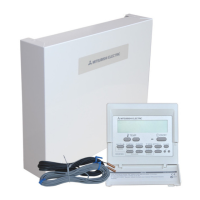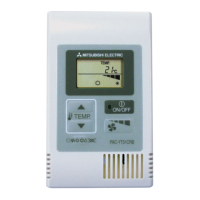What does it mean when LED2 is off on my Mitsubishi Electric PAC-IF072B-E?
- JJacqueline GonzalezNov 27, 2025
If the LED2 on the FTC (Main) is off, especially when LED1 is also off, it suggests a power issue with the FTC (Main) when powered via the outdoor unit. Check the voltage across the terminals L and N or L3 and N on the outdoor power board. If the voltage is not 220 to 240V AC, check the wiring of the outdoor unit and of the breaker. If the voltage is at 220 to 240V AC, check the voltage across the outdoor unit terminals S1 and S2. If the voltage is not 220 to 240V AC, check the fuse on the outdoor control board and check for faulty wiring. If the voltage is 220 to 240V AC, check the voltage across the indoor unit terminals S1 and S2. If the voltage is not 220 to 240V AC, check FTC (Main)-outdoor unit wiring for faults. If the voltage is 220 to 240V AC, check the FTC (Main) control board fo...






